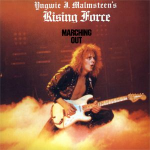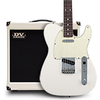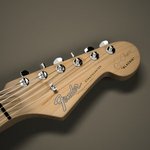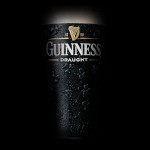Attraverso il nostro store puoi supportare il forum e nel contempo, ottieni un simpatico gadget da poter utilizzare!

CLICCA QUI
utilizza il codice jb20
e ottieni subito uno
sconto del 20%
su tutti gli articoli!

CLICCA QUI
utilizza il codice jb20
e ottieni subito uno
sconto del 20%
su tutti gli articoli!
Supporta Jamble!
Obiettivo Anno 2025:
€240.00
Data di scadenza: dic 31
Totale ricevute: €120.00
Tasse PayPal: €6.18
Saldo netto: €113.82
Manca all'obiettivo: €126.18
Valuta del sito: EUR
Data di scadenza: dic 31
Totale ricevute: €120.00
Tasse PayPal: €6.18
Saldo netto: €113.82
Manca all'obiettivo: €126.18
Valuta del sito: EUR
47%
Un grandissimo grazie a chi ha donato in questo periodo.
dic-5 Anonimo EUR50.00
dic-3 Nadir EUR10.00
nov-12 Anonimo EUR10.00
ago-28 AngeloANC EUR20.00
mar-22 LawHunter EUR20.00
gen-28 Anonimo EUR10.00
-
 Pedale Rotto... Mxr Microamp
di Donatello Nahi
Pedale Rotto... Mxr Microamp
di Donatello Nahi
[Oggi alle 11:23 AM] -
 Thomas Raggi va a trovare Norman
di elzeviro
Thomas Raggi va a trovare Norman
di elzeviro
[Oggi alle 08:59 AM] -
 Ma quanto mi piace Robben Ford
di hellequin
Ma quanto mi piace Robben Ford
di hellequin
[13 Dicembre, 2025, 07:26 PM] -
 Discografia Pink Floyd
di Donatello Nahi
Discografia Pink Floyd
di Donatello Nahi
[12 Dicembre, 2025, 11:09 PM] -
 Rob's guitars
di robland
Rob's guitars
di robland
[10 Dicembre, 2025, 06:30 PM] -
 Ad oltranza...Vasco
di elzeviro
Ad oltranza...Vasco
di elzeviro
[10 Dicembre, 2025, 01:13 PM] -
 Derek Trucks, the King of the slide
di elzeviro
Derek Trucks, the King of the slide
di elzeviro
[10 Dicembre, 2025, 09:41 AM] -
 Brunetti Singleman
di Vu-meter
Brunetti Singleman
di Vu-meter
[09 Dicembre, 2025, 12:50 PM] -
 Ci ha lasciati Steve Cropper (03/12/2025)
di Jessie_Greg_Music
Ci ha lasciati Steve Cropper (03/12/2025)
di Jessie_Greg_Music
[09 Dicembre, 2025, 10:42 AM] -
 Possibile attacco hacker
di Vu-meter
Possibile attacco hacker
di Vu-meter
[08 Dicembre, 2025, 07:19 PM] -
 Sire by Larry Carlton - chitarre economiche ma di qualità...
di robland
Sire by Larry Carlton - chitarre economiche ma di qualità...
di robland
[08 Dicembre, 2025, 06:35 PM] -
 Musica leggera e cantautorale italiana
di Santano
Musica leggera e cantautorale italiana
di Santano
[08 Dicembre, 2025, 10:55 AM] -
 Cosa ascoltano ultimamente i Jamblers?
di Donatello Nahi
Cosa ascoltano ultimamente i Jamblers?
di Donatello Nahi
[08 Dicembre, 2025, 12:08 AM] -
 L'ACTION sull'acustica
di Donatello Nahi
L'ACTION sull'acustica
di Donatello Nahi
[08 Dicembre, 2025, 12:04 AM] -
 Consigli prolunga cuffie
di hellequin
Consigli prolunga cuffie
di hellequin
[07 Dicembre, 2025, 11:15 PM] -
 FURTO - Godin Montreal Premiere
di robland
FURTO - Godin Montreal Premiere
di robland
[07 Dicembre, 2025, 02:54 PM] -
 P90 : comparazione
di robland
P90 : comparazione
di robland
[07 Dicembre, 2025, 02:24 PM] -
 Che corde usate?
di Donatello Nahi
Che corde usate?
di Donatello Nahi
[06 Dicembre, 2025, 06:12 PM] -
 Piccola riflessione post furto
di robland
Piccola riflessione post furto
di robland
[05 Dicembre, 2025, 11:40 AM] -
 Slash e i Guns & Roses
di Kla
Slash e i Guns & Roses
di Kla
[05 Dicembre, 2025, 07:07 AM] -
 Un brano dei Beatles - proposte
di Santano
Un brano dei Beatles - proposte
di Santano
[03 Dicembre, 2025, 06:46 PM] -
 Modifica ampli
di Vu-meter
Modifica ampli
di Vu-meter
[03 Dicembre, 2025, 10:58 AM] -
 Offerte Black Friday
di Vu-meter
Offerte Black Friday
di Vu-meter
[03 Dicembre, 2025, 06:53 AM] -
 Yamaha Storia II
di Vu-meter
Yamaha Storia II
di Vu-meter
[01 Dicembre, 2025, 05:16 PM] -
 Wampler TCD - The Compulsion Drive
di Prosit
Wampler TCD - The Compulsion Drive
di Prosit
[01 Dicembre, 2025, 12:27 PM] -
 Se io posso suonare in una band...tutto il mondo può...
di robland
Se io posso suonare in una band...tutto il mondo può...
di robland
[30 Novembre, 2025, 07:36 PM] -
 Prosit's basic gear
di LawHunter
Prosit's basic gear
di LawHunter
[30 Novembre, 2025, 09:23 AM] -
 Consigliami un concerto (YouTube)
di robland
Consigliami un concerto (YouTube)
di robland
[29 Novembre, 2025, 08:38 PM] -
 Imparare a suonare…
di Vu-meter
Imparare a suonare…
di Vu-meter
[28 Novembre, 2025, 11:39 PM] -
 Parafang!!
di Donatello Nahi
Parafang!!
di Donatello Nahi
[27 Novembre, 2025, 10:19 AM]
45 Anni fa - MADE IN JAPAN
Aperto da LawHunter, 16 Agosto, 2017, 09:50 AM
Discussione precedente - Discussione successiva
Azioni


